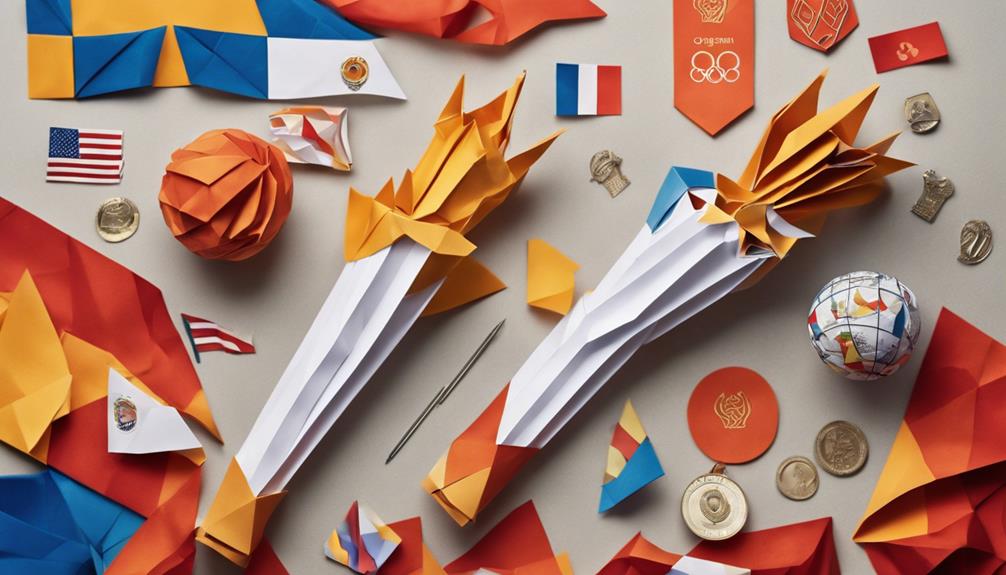The modern Olympic Games, inaugurated in 1896 in Athens, Greece, harbor a wealth of astonishing facts. The iconic Olympic torch relay symbolizes unity among nations, while the five interconnected rings represent the five continents and flag colors. Beyond the familiar rituals, lesser-known aspects of the Games await discovery. From the unconventional events like croquet and tug of war to the surprising composition of gold medals, mainly made of silver, the Olympic Games hold a treasure trove of fascinating facts. As you explore further, you'll uncover more remarkable stories and anecdotes that will indeed blow your mind.
Key Takeaways
- The Olympic torch relay symbolizes unity among nations, despite being a relatively modern tradition, starting in 1936.
- Gold medals are mainly made of silver, with a small amount of gold, and weigh around 586 grams.
- Unconventional sports like croquet, ballooning, and tug of war were featured in early Olympics, adding unique flavor to the Games.
- The Olympic rings represent the five continents, and the colors are present in every national flag, making it a symbol of unity.
- The youngest Olympic medal winner was Dimitrios Loundras, who won at just 10 years old in 1896, showcasing remarkable talent.
Olympic Origins and Traditions
As the world's premier international sporting event, the modern Olympic Games have a rich history rooted in ancient traditions and symbols that continue to inspire athletes and spectators alike. The first modern Olympics, held in 1896 in Athens, Greece, revived the ancient tradition after a 1503-year hiatus.
One of the most iconic Olympic symbols is the Olympic torch relay, which starts from Olympia, Greece, and symbolizes the unity of nations. The Olympic rings, designed in 1913, represent the five continents and the colors of flags from participating countries. The Olympic motto, 'Citius, Altius, Fortius' (Faster, Higher, Stronger), encourages athletes to excel and surpass their limits.
Throughout the Games, diverse sports have been featured, showcasing the evolution of the Olympics. From motorboat racing to tug of war, these unique sports have contributed to the rich tapestry of Olympic history. These symbols and traditions continue to play an essential role in the modern Olympic Games, inspiring athletes and spectators alike.
Unconventional Olympic Events
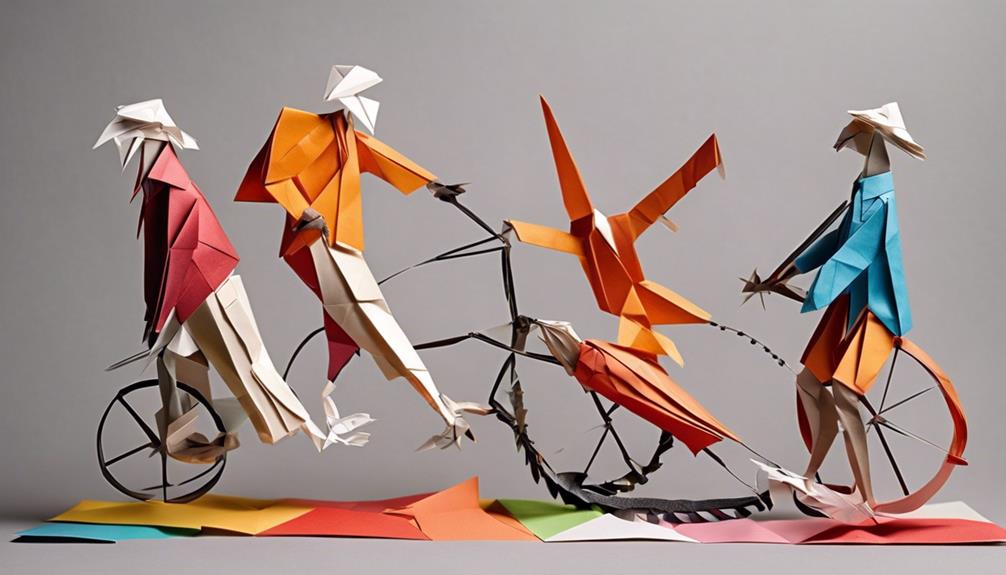
Beyond the familiar sports like track and field, swimming, and gymnastics, the Olympic Games have featured an array of unconventional events that have added a touch of whimsy to the competition. One of the most surprising aspects of the Olympics is the inclusion of unusual sports that have been part of the Games over the years.
| Unconventional Event | Year(s) Featured |
|---|---|
| Croquet | 1900 |
| Ballooning | 1900 |
| Tug of War | 1900-1920 |
| Solo Synchronized Swimming | 1984, 1988, 1992 |
These events, though short-lived, have contributed to the rich history of the Olympics. Tug of war, for instance, was a competitive sport from 1900 to 1920, while solo synchronized swimming made a brief appearance in the 1980s and 1990s. Other unusual events, such as motorboating and art competitions, have also had their moment in the Olympic spotlight. These unconventional events have added a unique flavor to the Games, making the Olympics a truly one-of-a-kind spectacle.
Surprising Medal Facts
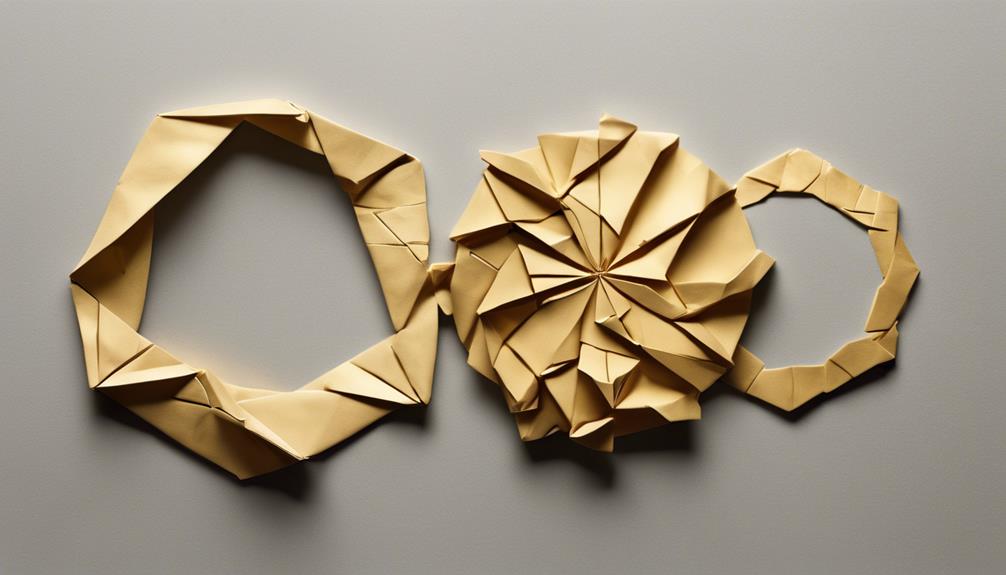
Olympic medals, coveted symbols of athletic excellence, hold surprising secrets, and a closer look reveals fascinating facts about these prized awards.
For instance, gold medals are primarily made of silver, with only about 6 grams of gold used in each average gold medal. Each Olympic medal weighs approximately 586 grams, symbolizing achievement and excellence in sports.
The design of Olympic medals varies for each Games, showcasing unique elements and cultural influences. These medals are awarded to the top athletes in each event, representing their hard work and dedication.
Bronze medals, often overlooked, hold significant value as they symbolize the Olympic spirit and perseverance. As records being broken and new heights are reached, Olympic medals serve as a tangible representation of athletic greatness.
The Olympic symbol on these medals is a confirmation to the athlete's commitment to their craft. With each medal comes a story of triumph, sacrifice, and glory, making them a prized possession for Olympians.
Olympic Moments of Kindness
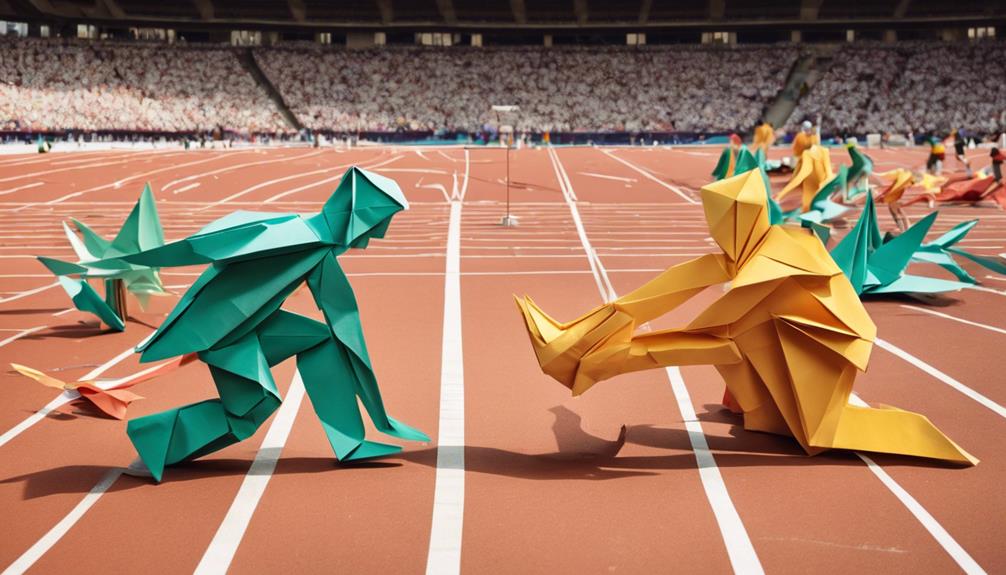
As the Olympic Games bring together athletes from around the world, they also showcase remarkable instances of kindness and compassion.
These selfless gestures, often unexpected and heartfelt, remind us that the Olympic spirit extends beyond mere competition.
From lending a helping hand to offering words of encouragement, these Olympic moments of kindness highlight the human connection that defines the Games.
Acts of Olympic Kindness
Throughout the history of the Olympic Games, athletes, coaches, and teams have demonstrated remarkable acts of kindness that have left a lasting impact on the spirit of the games.
Here are a few examples of these heartwarming moments:
- In the 2006 Olympics, a Norwegian coach lent a ski pole to Canadian skier Sara Renner, showcasing a remarkable act of kindness.
- The Lithuanian Basketball Team received financial support from the Grateful Dead, a unique act of kindness that helped them participate in the games.
- Australian athletes have been known to hide 'lucky loonies' and 'toonies' in stadiums for good luck, a heartwarming gesture of kindness.
- The tradition of releasing live doves at Olympic opening ceremonies symbolizes peace and goodwill among nations, a powerful act of kindness.
These acts of kindness have become an integral part of the Olympic spirit, showcasing the compassion and camaraderie that exist among athletes and teams from around the world.
Moments of Human Connection
What sparks these extraordinary displays of human connection at the Olympics, where athletes momentarily set aside their competitive drives to uplift and inspire each other? Moments of human connection are a tribute to the true spirit of the Olympic Games, showcasing perseverance, sportsmanship, camaraderie, and determination.
| Athlete | Moment of Human Connection |
|---|---|
| Steven Bradbury | Unexpected victory in the 2002 Winter Olympics, showcasing perseverance and sportsmanship |
| Sara Renner | Received help from a Norwegian coach after breaking a ski pole in the 2006 Olympics, symbolizing camaraderie |
| George Eyser | Competed in gymnastics with a prosthetic leg at the 1904 Olympics, highlighting determination and resilience |
These remarkable moments transcend nationalities and rivalries, reminding us that the Olympics are about more than just winning. They're about the human spirit, about coming together in the pursuit of excellence. As we witness these extraordinary displays of kindness, empathy, and compassion, we're reminded that even in the most competitive of environments, humanity can shine through.
Selfless Gestures Shine
During the Olympic Games, selfless gestures shine brightly, illuminating the true spirit of the competition and revealing the remarkable kindness of athletes and coaches alike. These acts of Olympic sportsmanship showcase the true essence of the Games, often overshadowing the competitive aspect.
Some remarkable examples of selfless gestures include:
- Canadian skier Sara Renner receiving help from a Norwegian coach in 2006, exemplifying the true spirit of Olympic sportsmanship.
- The Lithuanian Basketball Team receiving financial assistance from the Grateful Dead, demonstrating the unique support networks in the Olympic community.
- Dr. Benjamin Spock's diverse achievements, including winning a gold medal in rowing at the 1924 Paris Olympics, reflecting the multi-faceted talents of Olympic participants.
- The heartwarming story of Australian Steven Bradbury's unexpected victory in the 2002 Winter Olympics, highlighting the determination and resilience of Olympic athletes.
These remarkable stories of kindness and support networks demonstrate that the Olympic Games aren't only about winning, but also about the bonds formed between athletes and coaches, fostering an environment of Olympic sportsmanship, determination, and resilience.
Unlikely Olympic Heroes
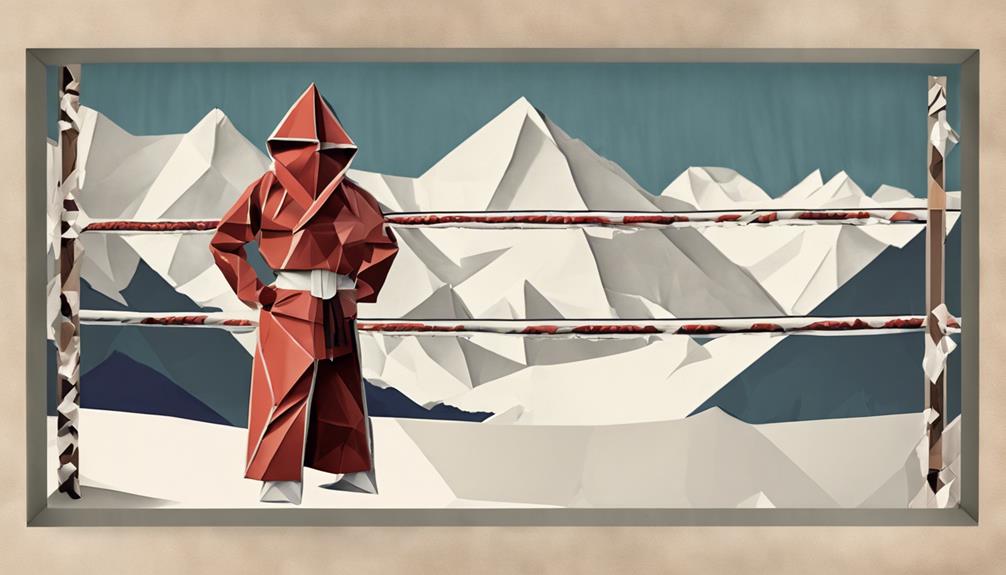
In the world of Olympic sports, where exceptional athletes often dominate the spotlight, it's the unlikely heroes who sometimes steal the show with their remarkable stories and against-all-odds triumphs. These unlikely Olympic heroes often embody the spirit of the Games, defying expectations and inspiring millions.
Take, for instance, Dimitrios Loundras, who at just 10 years old became the youngest medal winner in Olympic history at the 1896 Olympics. Then there's George Eyser, a one-legged gymnast who achieved extraordinary success at the 1904 Olympics, showcasing remarkable resilience and skill.
Abebe Bikila's barefoot victory in the 1960 marathon, earning him the first African gold medal, is another indication of the power of underdog triumphs. And who can forget Australian Steven Bradbury's unexpected victory in the 2002 Winter Olympics, a true illustration of the unpredictable nature of Olympic sports?
These remarkable stories of perseverance and triumph serve as a reminder that, in the Olympics, anything can happen.
Bizarre Olympic Moments
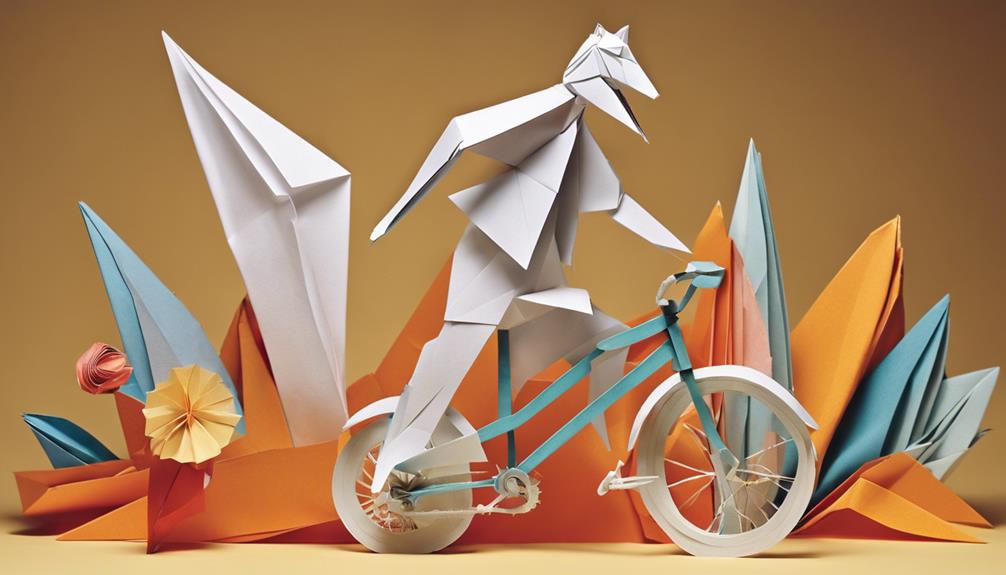
Olympic history is dotted with bizarre moments that have left audiences stunned, confused, or simply amused, and some of these peculiar events have become an integral part of the Games' folklore.
Some of these bizarre moments include:
- The 1904 Olympic Marathon, where only 14 competitors finished the grueling race due to various mishaps.
- French Figure Skater Surya Bonaly's banned backflip move, which shocked audiences at the 1998 Nagano Games.
- The flag mix-up between Haiti and Liechtenstein at the 1936 Olympics, leading to a moment of confusion and amusement.
- McDonald's facing a bun shortage during the Los Angeles Olympics due to a boycott, causing a fast-food frenzy.
These unusual events have become an integral part of Olympic history, showcasing the unpredictability and excitement of the Games. They add a touch of humor and humanity to the otherwise intense competition, making the Olympics a truly unique and engaging event.
Olympic Sponsorship and Funding
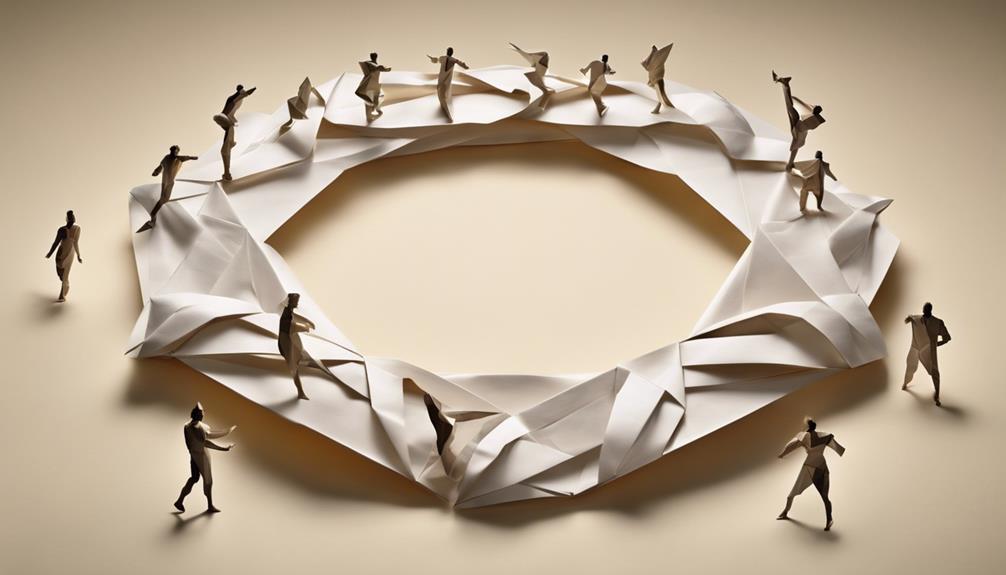
Behind the scenes of the Olympic Games, a complex web of sponsorships and funding sources has become increasingly vital to the event's success. The financial implications of these partnerships are staggering, with the 2014 Sochi Olympics being the most expensive in history, estimated at $51 billion. Sponsorships, such as McDonald's involvement in the 1984 Los Angeles Olympics, have been impacted by boycotts, highlighting the significance of these partnerships.
| Olympic Games | Sponsorship Impact | Financial Implications |
|---|---|---|
| 1984 Los Angeles | McDonald's boycott | Costly promotions due to Soviet Union boycott |
| 2014 Sochi | Durex donation | Unique forms of sponsorship and support |
| 2014 Sochi | Molson's Fridge installation | Creative promotional strategies |
| 1984 Los Angeles | Ticket sales | Financial implications of sponsorships |
Ticket sales also play a significant role in funding the Games. The Olympic sponsorship model has evolved over the years, with unique partnerships emerging, such as Durex's donation of 130,000 condoms to athletes in Athens. As the Games continue to grow, the importance of these funding sources will only increase, shaping the future of the Olympic Games.
Unique Olympic Ceremonies
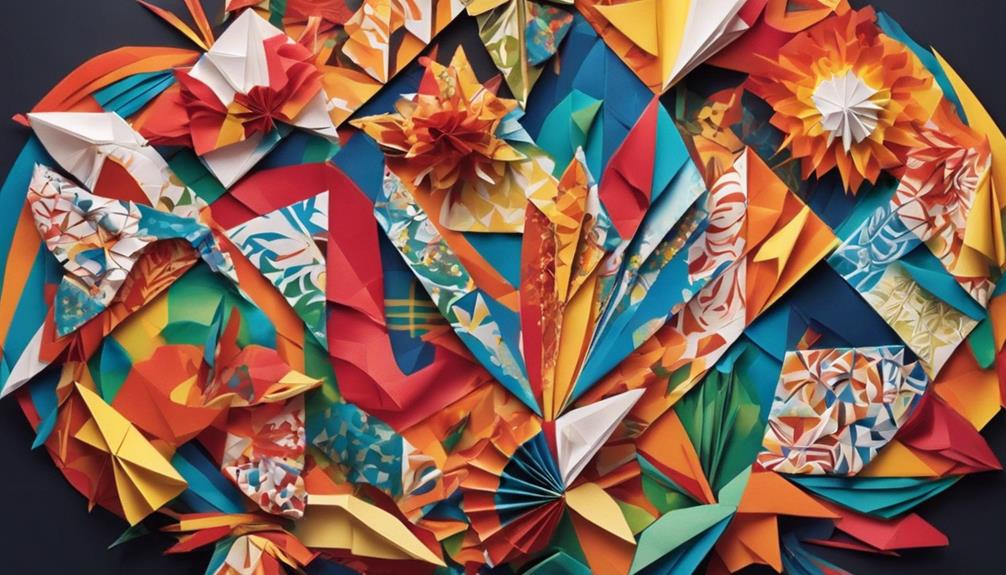
When it comes to Unique Olympic Ceremonies, the International Olympic Committee (IOC) has consistently pushed the boundaries of creativity and cultural expression.
The Olympic Flame Lighting, Parade of Nations, and Cultural Showcases are just a few examples of the iconic ceremonies that have become synonymous with the Games.
From the solemnity of the Flame Lighting to the vibrant displays of Cultural Showcases, each ceremony plays an essential role in setting the tone for the Olympic Games.
Olympic Flame Lighting
In a centuries-old tradition, the Olympic flame is ignited at the temple of Hera in Olympia, Greece, marking the start of a symbolic journey to the host city. This ceremony is steeped in history and significance, representing the start of the Olympic Games and the unity between nations.
Here are some fascinating facts about the Olympic flame lighting:
- The Olympic flame has been lit in an ancient ceremony at the temple of Hera in Olympia, Greece since the modern Olympics started in 1896.
- The torch relay, where the flame is transported to the host city, symbolizes the start of the Olympic Games and the unity between nations.
- The Olympic flame must burn continuously throughout the event, representing purity, the pursuit of perfection, and the enduring spirit of the Games.
- In case the flame extinguishes, a backup flame from Greece is used to reignite it, ensuring the continuity of this symbolic tradition.
The lighting of the Olympic flame and the torch relay are integral parts of the unique and enthralling Olympic opening ceremonies. These ceremonies are a tribute to the rich history and symbolism of the Olympic Games, and the flame remains an enduring symbol of the Olympic spirit.
Parade of Nations
As the Olympic stadium comes alive with anticipation, the Parade of Nations kicks off the celebration of unity and diversity, featuring athletes from around the world proudly carrying their country's flag.
This iconic event marks the beginning of the Opening Ceremony, where athletes from all participating countries march in alphabetical order, except for Greece, which leads the procession, and the host nation, which enters last.
During the Parade of Nations, spectators are treated to a vibrant display of cultural attire, colors, and enthusiasm as each nation's delegation makes its way into the Olympic stadium. This time-honored tradition symbolizes the coming together of nations in peaceful competition and camaraderie.
As the athletes parade around the stadium, they embody the Olympic spirit, showcasing their national pride and unity with fellow competitors from around the globe.
The Parade of Nations is a demonstration of the power of sports to bring nations together, fostering a sense of global harmony and cooperation.
Cultural Showcases
Beyond the Parade of Nations, the Olympic Games also feature a range of unique cultural showcases that celebrate the host country's heritage and flair. These cultural showcases are an integral part of the Olympic tradition, allowing the host country to share its unique identity with the world.
Here are some fascinating examples:
- Inflatable tube men: Initially invented for the Atlanta Olympics, these colorful inflatables added a unique touch to the ceremonies.
- Live dove releases: This tradition, symbolizing peace and harmony among nations, has been a staple of Olympic opening ceremonies.
- Molson's Fridge: At the 2014 Sochi Games, this installation provided free beer exclusively to Team Canada, adding a fun and patriotic element to the event.
- Quirky traditions: Canadian Olympians have a tradition of hiding 'lucky loonies' and 'toonies' in stadiums for good luck during the Games.
These cultural showcases are an essential part of the Olympic experience, allowing countries to express their unique heritage and flair. By incorporating these unique elements, the Olympics become a true celebration of cultural diversity and patriotism.
Olympic Record-Breaking Feats
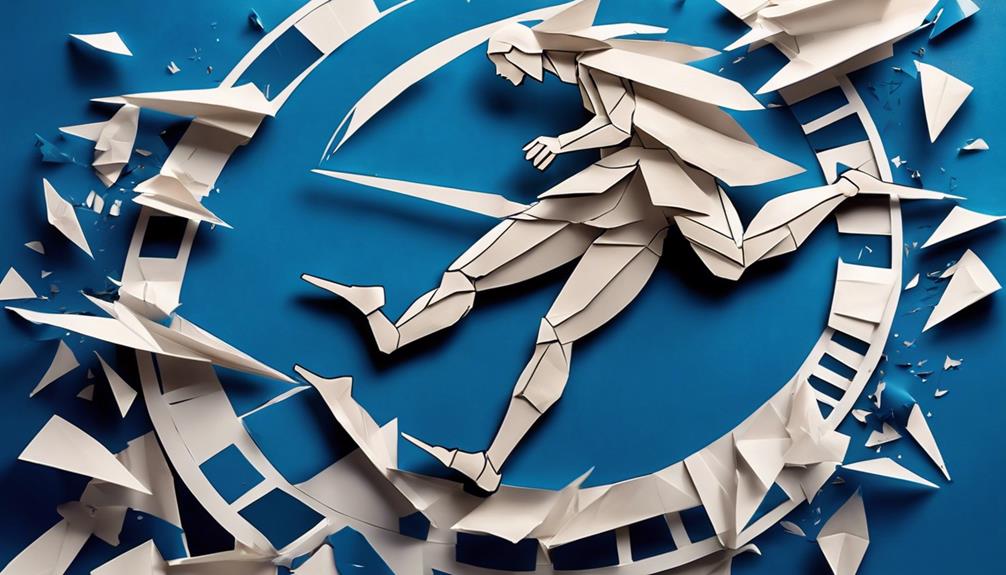
Olympic athletes continually push the boundaries of human achievement, and the record-breaking feats that have emerged from the Games are a demonstration of their unwavering dedication and unrelenting pursuit of excellence.
One such athlete is Usain Bolt, who holds the record for the fastest 100m and 200m sprints in Olympic history, clocking 9.63 seconds and 19.30 seconds, respectively.
Michael Phelps boasts a record-breaking 23 Olympic gold medals, the most by any athlete in history, spanning multiple swimming events.
In gymnastics, Simone Biles stunned the world with her record-tying four gold medals in a single Olympics at the 2016 Rio Games.
Meanwhile, Norwegian cross-country skier Marit Bjørgen set a new record with 15 Olympic medals, the most by any Winter Olympian in history.
These Olympic record-breaking feats showcase the incredible achievements of athletes who've dedicated their lives to their craft, pushing the limits of human potential.
Frequently Asked Questions
What Are 5 Interesting Facts About Modern Olympics?
She explores the fascinating world of modern Olympics, discovering the Games' 1,503-year revival, women's inclusion since 1900, and the unique feats of athletes who've medaled in both Winter and Summer Olympics.
What Other Interesting Facts Are There About the Olympics?
As the Olympic torch flickers, darkness reveals hidden secrets: the Olympics' ancient origins date back to 776 BC, while the modern Games' first marathon was inspired by a Greek soldier's 25-mile run to deliver victory news in 490 BC.
What Are 5 Interesting Facts About the Ancient Olympics?
She explores the ancient Olympics, discovering that athletes competed naked, the games lasted five to six months, and they were held every four years, with the first recorded games dating back to the 8th century B.C.
What Makes the Olympic Games Unique?
What makes the Olympic Games stand out from other international sporting events? She argues it's the unique blend of ancient historical roots, cultural unity, and diverse sporting disciplines that sets the Olympics apart from the rest.
What are Some Surprising Facts About the Modern Olympic Games?
The modern Olympic Games feature a wide range of sports, including some surprising events like golf and rugby sevens. The gcc high vs gcc are also often full of unexpected outcomes, with underdog teams from smaller nations occasionally beating out powerhouse competitors. Despite the intense competition, the Games also promote unity and sportsmanship among athletes from around the world.
Conclusion
As the Olympic torch is passed from one generation to the next, its flame continues to burn bright, illuminating the trailblazing achievements of modern Olympians.
Like a time capsule unearthed from the ancient Greek agora, the modern Olympic Games remain a tribute to human perseverance, athletic prowess, and international unity.
As we look to the future, one thing is certain – the Olympics will continue to inspire, astonish, and bring people together in ways both unexpected and extraordinary.

